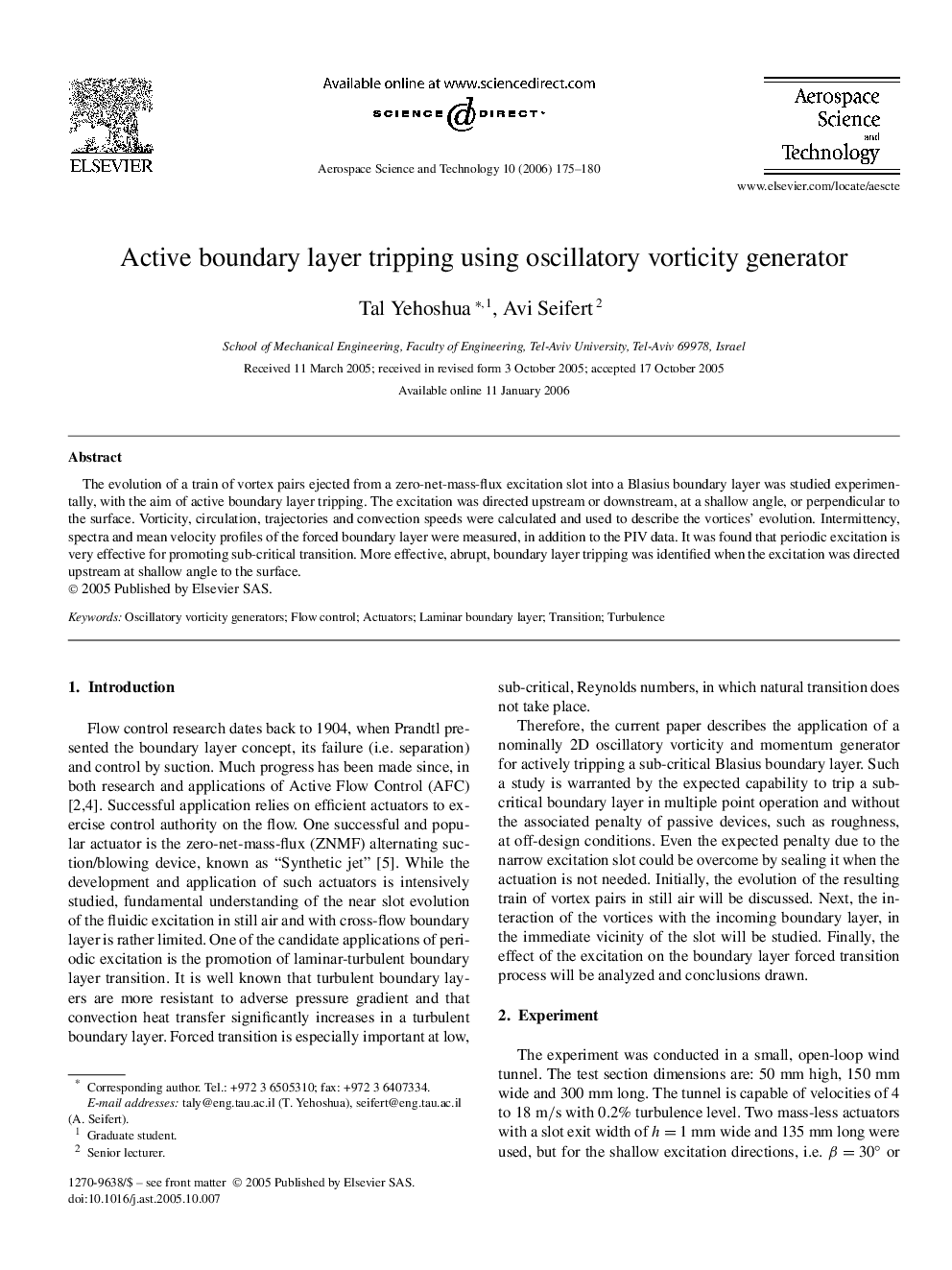| Article ID | Journal | Published Year | Pages | File Type |
|---|---|---|---|---|
| 1719070 | Aerospace Science and Technology | 2006 | 6 Pages |
The evolution of a train of vortex pairs ejected from a zero-net-mass-flux excitation slot into a Blasius boundary layer was studied experimentally, with the aim of active boundary layer tripping. The excitation was directed upstream or downstream, at a shallow angle, or perpendicular to the surface. Vorticity, circulation, trajectories and convection speeds were calculated and used to describe the vortices' evolution. Intermittency, spectra and mean velocity profiles of the forced boundary layer were measured, in addition to the PIV data. It was found that periodic excitation is very effective for promoting sub-critical transition. More effective, abrupt, boundary layer tripping was identified when the excitation was directed upstream at shallow angle to the surface.
